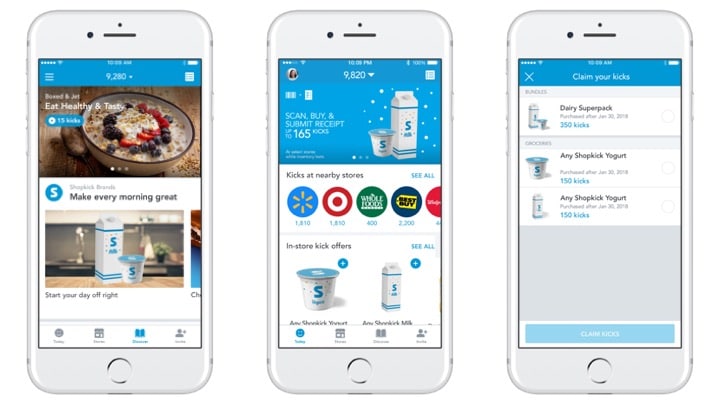Of all the hobbies I’ve picked up over the years, photography has definitely become my favorite. I wouldn’t call myself a pro, but as smartphone cameras have evolved — with sharper resolutions, fancy features like portrait mode, and handy tools like image stabilizers — I’ve grown pretty confident with my skills. Taking photos of my kids? Easy. Capturing that stunning sunset on vacation? I’m on it. Even snapping the hilarious ways Starbucks baristas spell my name? You bet.
While photography might be a passion, here’s the fun twist: it’s also helping me earn rewards. No, I’m not selling my photos or entering competitions, but I’ve found a way to turn my everyday smartphone snaps into real savings. How, you ask? By taking pictures of my shopping receipts! It’s quick, easy, and, thanks to apps like Shopkick, super rewarding. So, whether you’re into artsy photography or simply love the idea of cashing in on your grocery trips, stick around, we’re diving into how you can turn snapshots into gift cards and perks you’ll actually use!
Why Take Pictures of Your Receipts?
Taking pictures of your receipts isn’t just another tech trick — it’s a total game-changer! Imagine earning rewards for purchases you were going to make anyway, no extra effort required. Shopping rewards apps, like Shopkick, let you earn points (called kicks) for uploading your receipts, making it an easy and satisfying way to save. It’s a win-win: you get rewarded for the everyday essentials you need, and those kicks can be redeemed for gift cards to stores you already love. Best Buy, Starbucks, Walmart… need we say more?
Plus, the process is so simple that it feels more like a fun hobby than a chore. Whether you’re grabbing groceries, treating yourself to a coffee run, or snagging your favorite products, Shopkick helps you make every receipt count. So why not turn shopping into earning? With just a quick photo, you’ll be on your way to rewards that feel like a little gift to yourself!
How to Take Pictures of Your Receipts
Snapping your receipts for rewards is easier than ever. Let’s break it down step-by-step!
- Grab your receipt: After your shopping trip, make sure to save your receipt if you purchased any eligible items from the app
- Open Shopkick: Launch the app and head to the receipt upload section. You’ll see clear instructions on what to do next
- Position the receipt: Lay it flat in good lighting. Avoid wrinkles and shadows for a clear picture. Bonus tip: use a contrasting background so the receipt stands out!
- Snap the photo: Using your phone’s camera, capture the entire receipt from top to bottom. Make sure all details — like store name, date, and items — are visible
- Submit and earn kicks: Once your receipt is uploaded, Shopkick will process it. Before you know it, you’ll see kicks added to your account!
Remember, the better the picture quality, the quicker your kicks come through. And don’t forget — you can upload receipts from lots of stores, so your earning potential is endless!
Tips for Maximizing Your Rewards
Want to take your kick-earning game to the next level? Here are a few pro tips:
- Upload regularly: Don’t wait — submit your receipts as soon as you can. Some stores have time limits for processing, so stay on top of it!
- Combine earning methods: Shopkick isn’t just for receipts! Earn kicks by walking into participating stores, scanning product barcodes, or shopping online
- Double-check your receipts: Make sure the details on your receipt are clear and complete. Blurry or incomplete uploads can slow down processing
- Follow Shopkick on social media: Connect with the Shopkick community for tips, contests, and bonus opportunities to earn even more kicks
-
Try different stores: Shopkick partners with a variety of brands and retailers, so explore new stores to discover more kick-earning opportunities!
With just a little effort, those kicks can stack up quickly — and your next reward will be right around the corner.
Start Earning Rewards Today!
Don’t wait — download Shopkick now and start turning your shopping trips into gift cards and perks!




